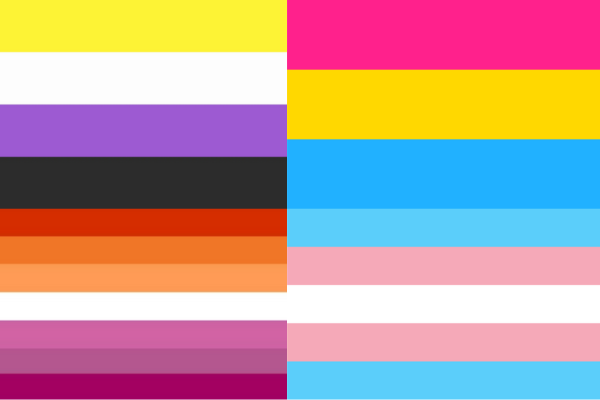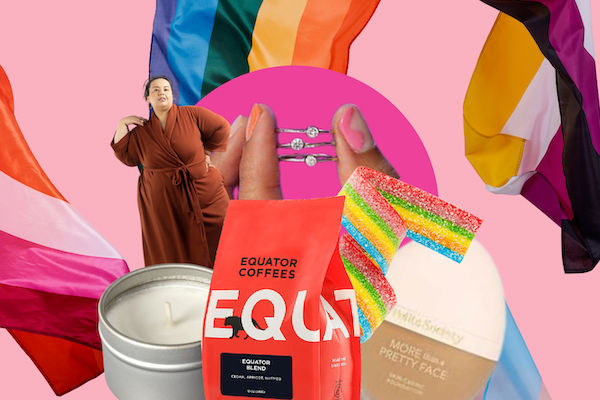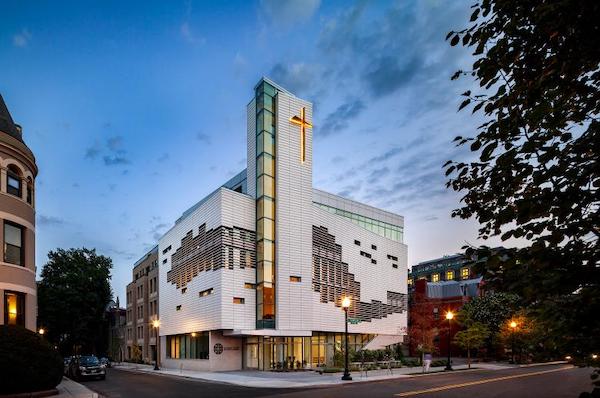
Biden Administration Announces New Actions to Protect LGBTQ+ Communities
June 26, 2023
Moby Dyke and Gay Bar Give Insights for the Future of Queer Spaces
July 6, 2023As Gilbert Baker’s original Pride flag celebrates 45 years of flying high, we look at how the Rainbow flag has evolved and how it has inspired other flags celebrating sexuality and gender diversity.
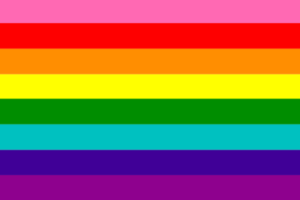
Gilbert Baker’s Pride Flag – Eight Bands (1978)
Developed because of a challenge set by activist and politician Harvey Milk, the original rainbow flag was created for San Francisco Pride and was first flown at the city’s United Nations Plaza on June 25, 1978. It consisted of eight bands of color, each attributed with its own meaning – pink for sexuality, red for life, orange for healing, yellow for sunlight, green for nature, turquoise for art and magic, blue for serenity, and purple for spirit.
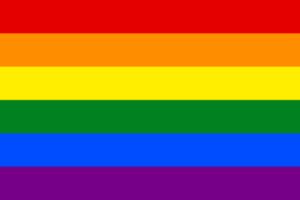
Rainbow Pride Flag – Six Bands (1979)
The most well-known incarnation of the Pride flag is the six-banded version. Due to costs and difficulty sourcing dyes, Baker dropped pink and turquoise from his original design, creating the rainbow flag which is now synonymous with the LGBTQ+ community.
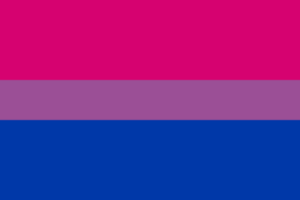
Bisexual Flag (1998)
Inspired by artist Liz Nania’s “biangles” – two overlapping triangles, one pink and one blue, which create a smaller purple triangle at the point they meet – Michael Page created the bisexual flag to better represent the bisexual community. According to Page, the pink and blue stripes represent same-sex and opposite-sex attraction respectively, while the lilac overlap symbolizes more than one type of attraction.
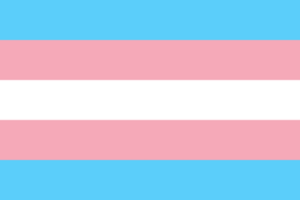
Transgender Flag (1999)
The most widely used transgender flag was designed in 1999 by American activist Monica Helms, herself a trans woman. The baby-blue and pale pink stripes chosen to represent the gender-stereotypical colors, with the central white band symbolizing people who are intersex, transitioning or have a neutral or undefined gender. Significantly, the flag looks the same whichever way it is held up – which Helms said was so it was always correct, representing a trans person finding correctness in their life.
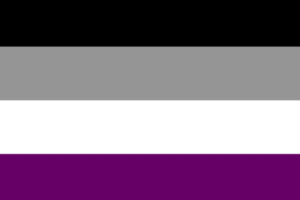
Asexual Flag (2010)
In 2010, AVEN (Asexuality Visibility and Education Network) ran a contest on their website calling for designs for a flag representative of the asexual community. The winning flag, designed by user standup, mirrored the stripes of other Pride flags. The asexual flag consists of four horizontal bands in black, grey, white, and purple, representing asexuality, the grey area between sexual and asexual, allies belonging to other sexualities and community respectively.
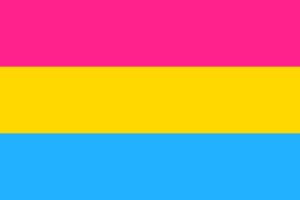
Pansexual Flag (2012)
The pansexual flag was created to show the differences between pansexuality and bisexuality. Social media user Jasper V first posted the flag on Tumblr and it soon became widely recognized. The three stripes of the pansexual flag are hot pink (representing attraction to women), yellow (representing attraction to nonbinary people), and cyan (representing attraction to men).
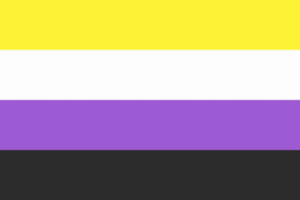
Nonbinary Flag (2014)
Designed by Tumblr user Kye Rowan, the nonbinary flag contains yellow, white, purple, and black horizontal stripes. Yellow stands for people whose gender exists outside the binary, white for people with all or many genders, purple for genders that are a mixture of male and female and black for those who do not identify as any gender.
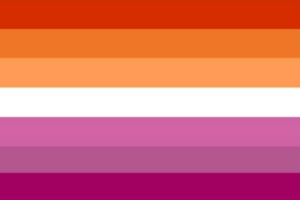
Lesbian Flag – Sunset (2018)
Unlike other sexualities, the lesbian community have struggled to settle on one flag. The 1999 Labrys design created by designer Sean Campbell has been criticized for using a symbol linked to the Holocaust, while 2010s lipstick lesbian flag – made up of stripes of varying shades of pink and red with a white strip at the center – has lost popularity due to designer Natalie McCray advocating trans exclusion. The seven-striped, orange-pink or “sunset” flag (pictured) created by Emily Gwen is now most used, with the individual bands representing gender non-conformity, independence, community, unique relationships to womanhood, serenity and peace, love and sex, and femininity.
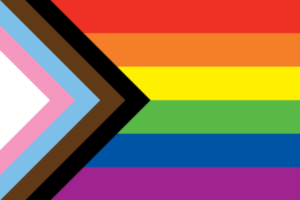
Progress Flag (2018)
The Progress Pride flag is based on Gilbert’s rainbow Pride flag. An overlayed chevron of white, pink, blue, brown, and black was added by Daniel Quasar to represent marginalized LGBTQ+ groups – the arrow pointing right to show the progress that has been made but that more needs to be done. The pink, blue and white of the trans flag symbolizes the trans community, while the black and brown stripes recognize LGBTQ+ people of color. The black stripe also represents those lost to AIDS.
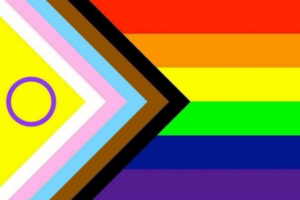
Intersex-Inclusive Progress Flag (2021)
The most recent incarnation of the rainbow flag is the Intersex-Inclusive Progress design, incorporating the symbol of the intersex community – a purple circle on a yellow background – into the center of the chevron on the Progress flag. Valentino Vecchieti of Intersex Equality Rights UK adapted Quasar’s flag to encourage awareness and inclusion of this minority group who have often been overlooked in LGBTQ+ circles.
There are many more Pride flags in use that you may see at events, including flags for the genderfluid, polysexual, abrosexual, and demisexual communities. It will be interesting to see how Pride flags continue to evolve as the LGBTQ+ community push for greater inclusion for all.


